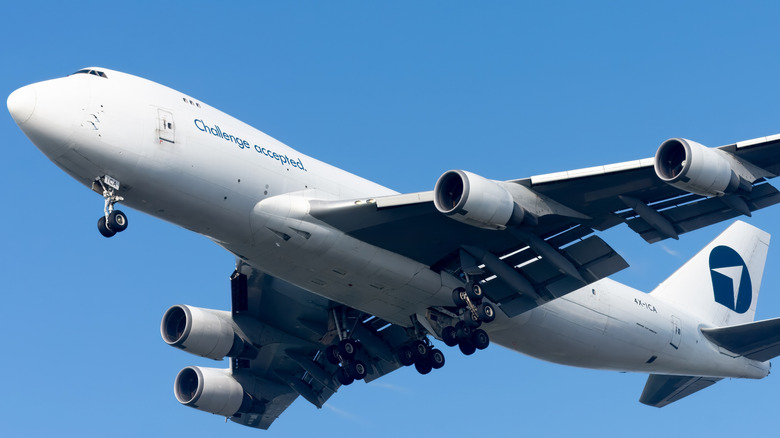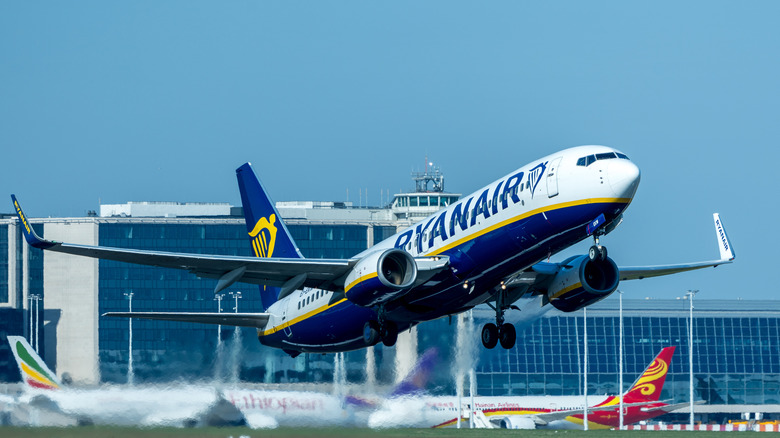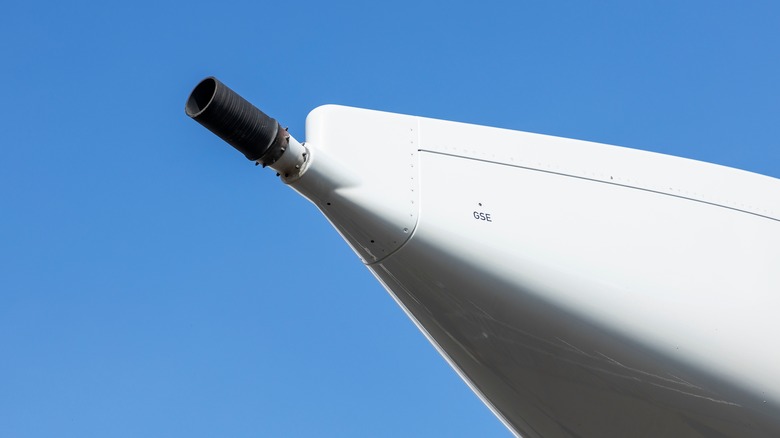Why Do Planes Sometimes Dump Fuel Before Landing?
For nervous travelers, an aircraft's landing marks one of the flight's most harrowing moments. For the pilot and crew, it marks the completion of yet another successful journey 30,000 feet in the air. As with any aspect of flying, there are protocols, safety procedures, and more that go into ensuring a hitch-free landing. Sometimes, pilots wish passengers knew more about their job.
One thing that may happen before a landing is a fuel dump. Now, you might think that airlines would want to dump as little of their precious fuel as possible, given how valuable the stuff is. For an idea of how much we're talking about, the International Air Transport Association reports that in 2019, the world's airlines spent $188 billion on fuel. So dumping it isn't done lightly, and certainly not every flight.
Fuel dumps, however, can be crucial for safety. When a flight has gone awry, whether forced into an emergency landing or diverted to an alternative airport, the aircraft may be above its maximum landing weight. The only practical way to shed the excess weight is to release it in a fuel dump, thereby allowing for the safest possible landing in the circumstances. Maximum weights, of course, differ a lot between aircraft and between airports, but there's a very good reason to have them in place. Electric planes might be the future of flight, but until we know for sure, fuel management is a necessity.
Maximum landing weight is generally lower than maximum takeoff weight
Operating when overladen can compromise structural integrity, with potentially fatal results. "Excessive weight reduces the flight performance in almost every respect," the Federal Aviation Administration's "Pilot's Handbook of Aeronautical Knowledge" says. It adds that when landing, the approach will be faster, there will be too much weight on the wheels, and it will take longer to bring the aircraft to a final stop after touchdown. At best, landing beyond the aircraft's designated maximum landing weight increases the chances of something going wrong.
Once the considerable weight of several hundred passengers and crew, plus their carry-ons and luggage, are accounted for, the aircraft's weight doesn't change much during a flight. "Fuel burn is normally the only weight change that takes place," the handbook says. "As fuel is used, an aircraft becomes lighter and performance is improved." The difference can be marked, with 30 gallons equaling the approximate weight of one person on board.
The maximum takeoff and landing weights are typically quite distinct. Take the Boeing 737, one of the best jets Boeing has ever made. According to Boeing, the 737-800 variant has a maximum takeoff weight of 174,200 pounds, while its maximum landing weight 146,300 pounds. The 737, though, isn't a model with a particularly high difference between the two values, in a relative sense, and this means that it's one of many that isn't able to dump fuel.
How fuel dumping works and what aircraft that can't do it do instead
Fuel dumping is a relatively simple process. "This is done via valves in the wingtips that allow fuel to be pumped out and vaporized," John Cox of Safety Operating Systems, a former US Airways captain, said in USA Today. Such aircraft, Cox said, "have standpipes that stop the fuel jettisoning at a specific level. This safety design ensures that there is enough fuel to fly for a time and land." To minimize any environmental ill effects from the fuel, it is performed at as high an altitude and over as remote an area as practical in the situation. There, the fuel evaporates.
Cox also noted that it's typically bigger long-haul aircraft that can dump fuel, because "heavy airplanes put more stress on the landing gear," while smaller models are less vulnerable to this. They are often capable of emergency landings closer to their maximum takeoff weight, but where doing so would be too great a risk, they can also revert to the standby of burning off fuel the old-fashioned way: By circling the airport.
Keeping people safe in the skies is the bottom line. While it's uncommon to dump fuel, it's a crucial tool for pilots to have access to should the need arise.


